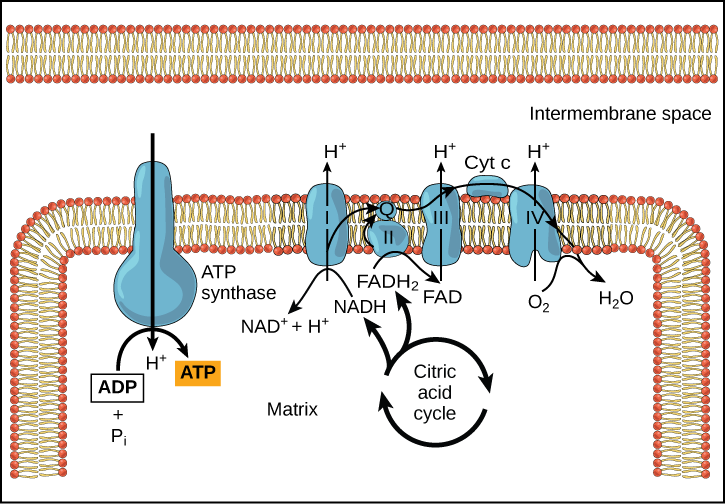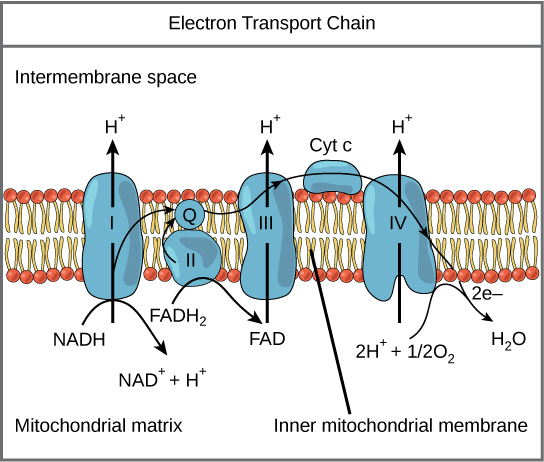The Final Reduced Species in the Electron Transport Chain Is
2 points Written description of a minimum of 4 organisms must include a producerplant 1 point Clear. A Excited electrons must pass through several pigments before they can be transferred to electron acceptors of the electron transport chain.

Electron Transport Chain Biology For Majors I
Anammox an abbreviation for anaerobic ammonium oxidation is a globally important microbial process of the nitrogen cycle that takes place in many natural environments.
. The bacteria mediating this process were identified in 1999 and were a great surprise for the scientific community. B This arrangement enables the plant to absorb light energy of a variety of wavelengths. Instead a partially reduced form such as a semiquinone that can respond to the cumulative reduction of an electron carrier system may be the critical electron.
Electron transport chain ETC in membrane pumps H across membrane. Organisms such as Pseudomonas spp. C This arrangement enables the plant to absorb more photons from light energy all of which are at the same.
From prokaryotic bacteria and archaeans to eukaryotic protists fungi plants and animals all living organisms undergo respirationRespiration may refer to any of the three elements of the process. Need oxygen as the final electron acceptor in the electron transport chain and must have adequate oxygen in their immediate atmosphere in order to grow. In this graphical review we.
The mitochondrial electron transport chain utilizes a series of electron transfer reactions to generate cellular ATP through oxidative phosphorylation. First respiration may refer to external respiration or the process. Challenges and potential solutions for the design of.
Reduced community productivity 1 point b Describe a four-organism food chain that might characterize a desert community and identify the trophic level of each organism. The relationship between P R and the overall reduction state of an electron carrier group in a protein may be complicated as the redox form that donates an electron to O 2 is not necessarily fully reduced. A consequence of electron transfer is the generation of reactive oxygen species ROS which contributes to both homeostatic signaling as well as oxidative stress during pathology.
These organisms are classified as. In cultured skeletal muscle cells and C2C12 myotubes Ucn 2 inhibits insulin-induced Akt and ERK12 phosphorylation consistent with the hypothesis that Ucn 2 functions as a local negative regulator of glucose uptake in skeletal muscle and suggests the possibility that suppression of the Ucn 2CRH-R2 pathway may provide benefits in insulin. The reduced species are oxidized by a series of respiratory integral membrane proteins with sequentially increasing reduction potentials the final electron acceptor being oxygen in aerobic respiration or another species in anaerobic respiration.
The membrane in question is the inner mitochondrial membrane in eukaryotes and the cell membrane in prokaryotes. Respiration is the process in which organisms exchange gases between their body cells and the environment. Here recent advances on catalytic effects in increasing the rate of conversion of soluble long-chain LiPSs to insoluble short-chain Li 2 S 2 Li 2 S and vice versa are reviewed and the roles of noble metals metal oxides metal sulfides metal nitrides and some metal-free materials in this process are highlighted.
In the anammox reaction nitrite and ammonium ions are converted directly into. Some organisms dont require oxygen for growth since they use fermentation to harvest energy but.

Electron Transport Chain Biology For Majors I

Electron Transport Chain An Overview Sciencedirect Topics

Electron Transport Chain Bioninja
Formation Of Reactive Oxygen Species And Cellular Damage The Alcohol Pharmacology Education Partnership
No comments for "The Final Reduced Species in the Electron Transport Chain Is"
Post a Comment